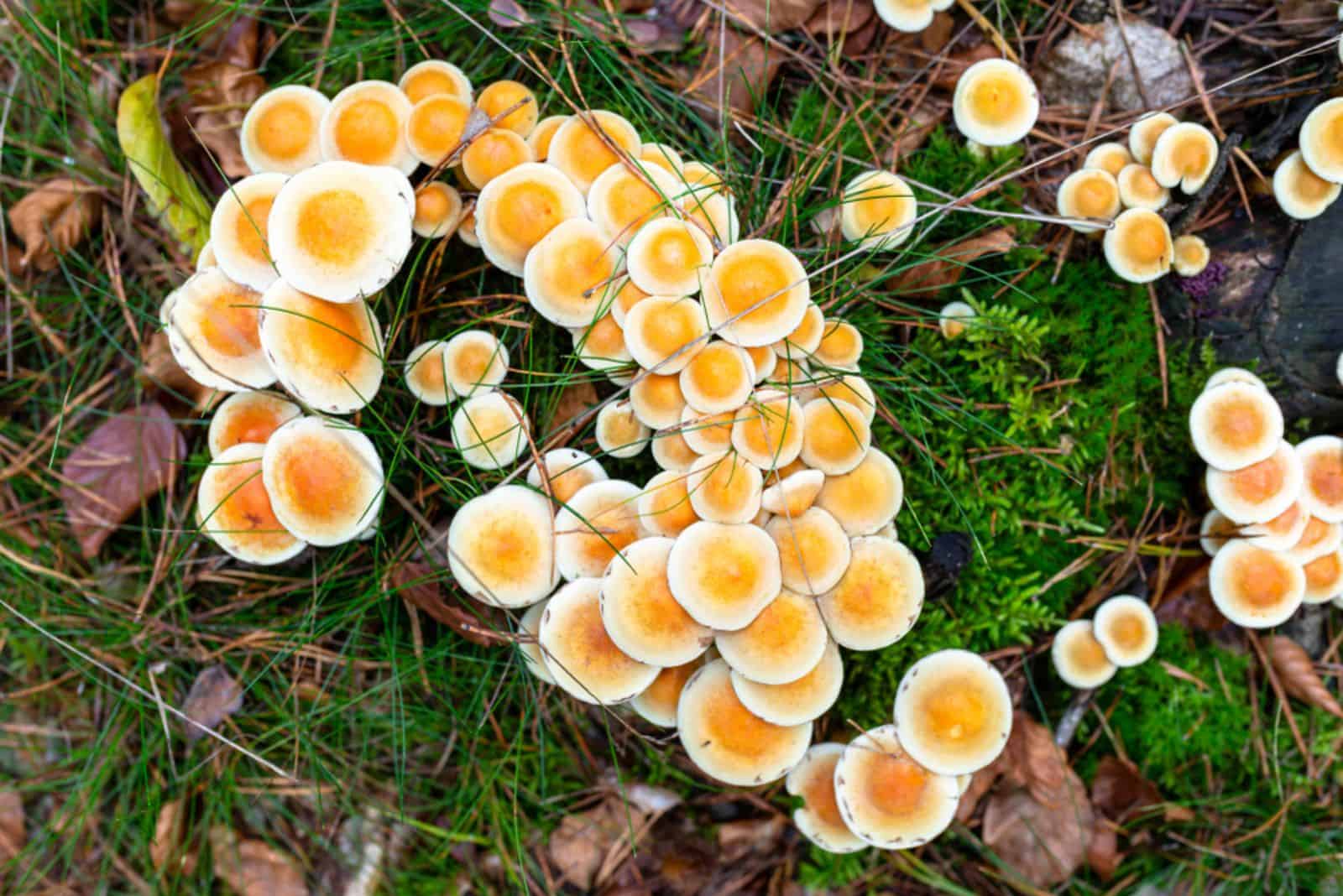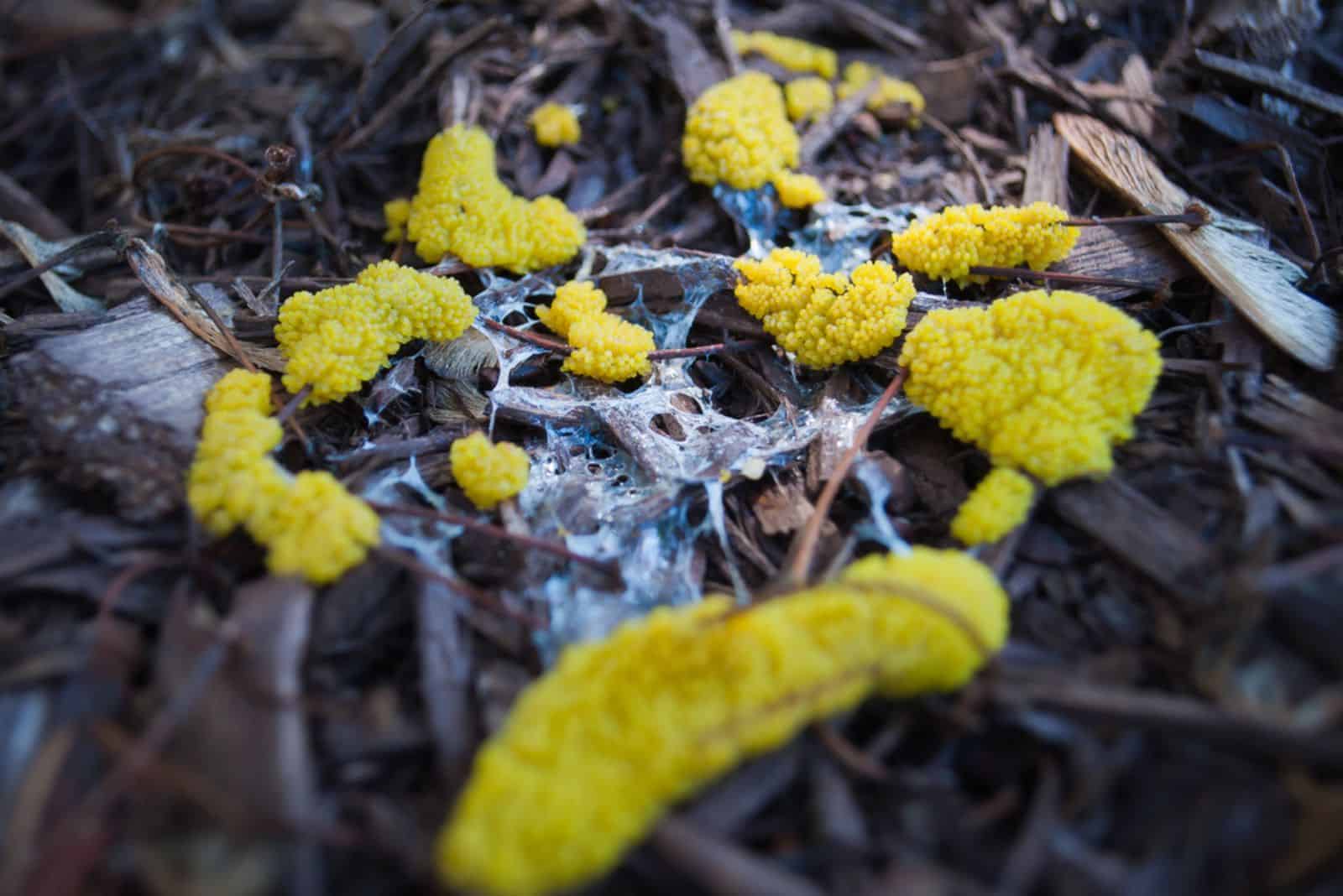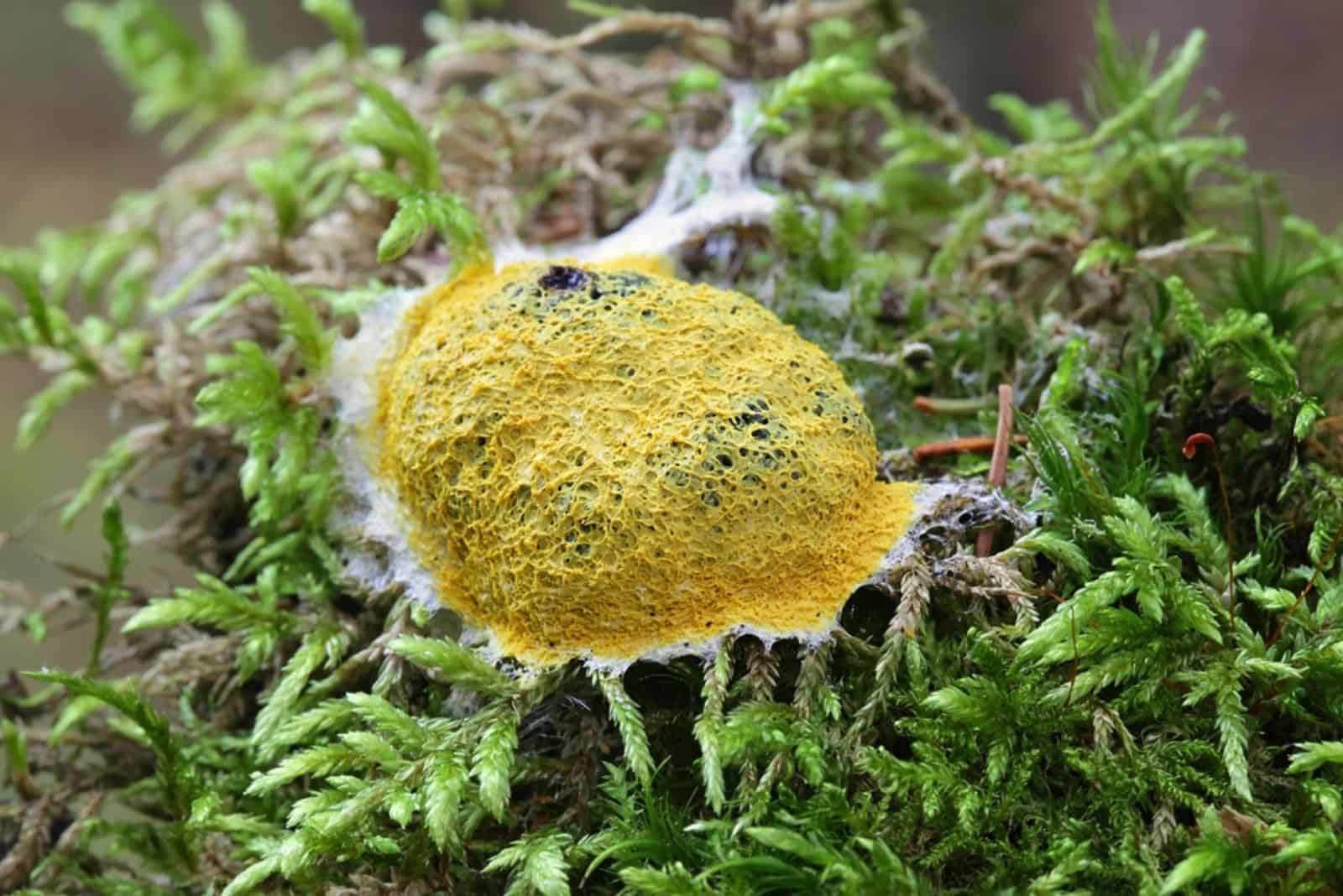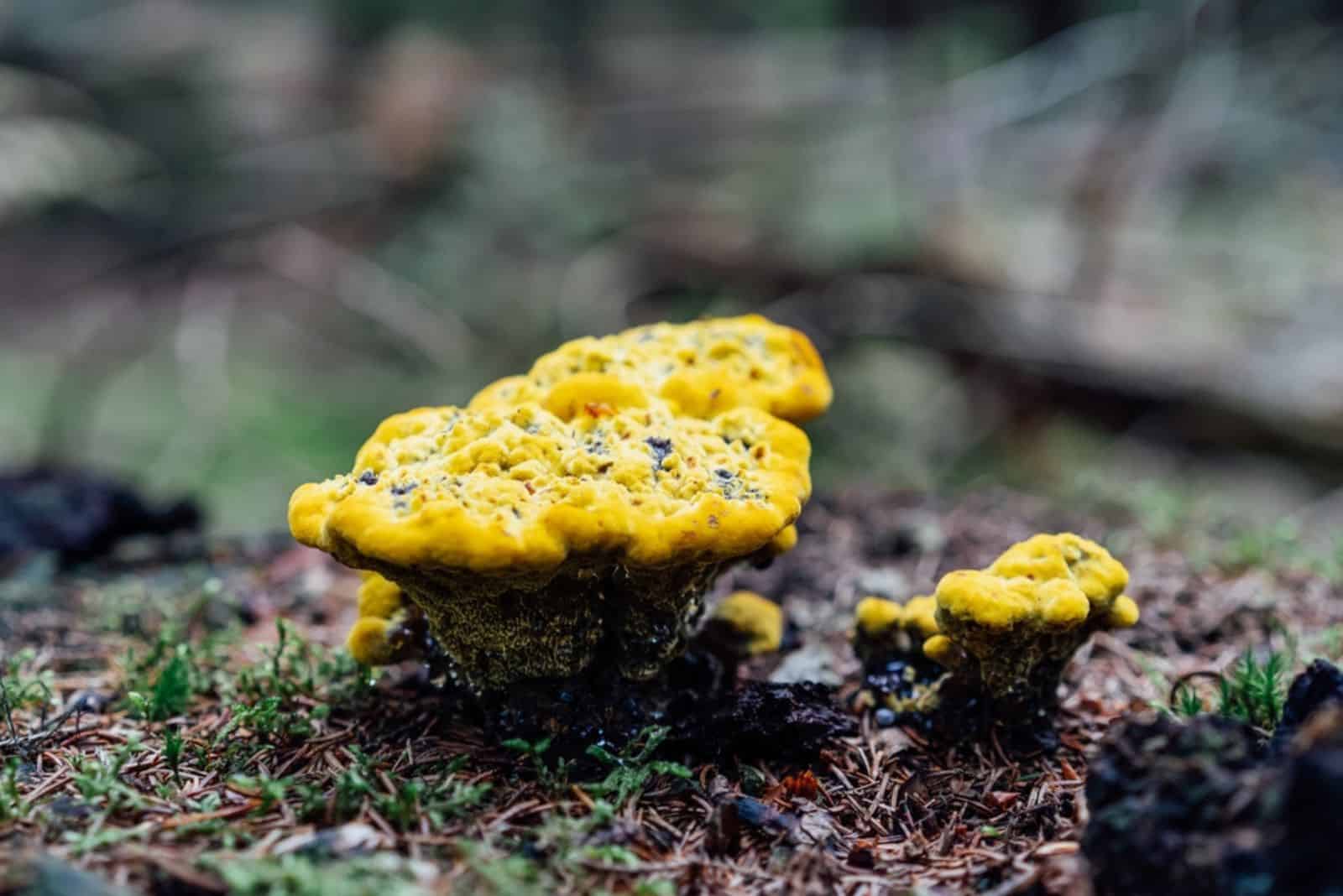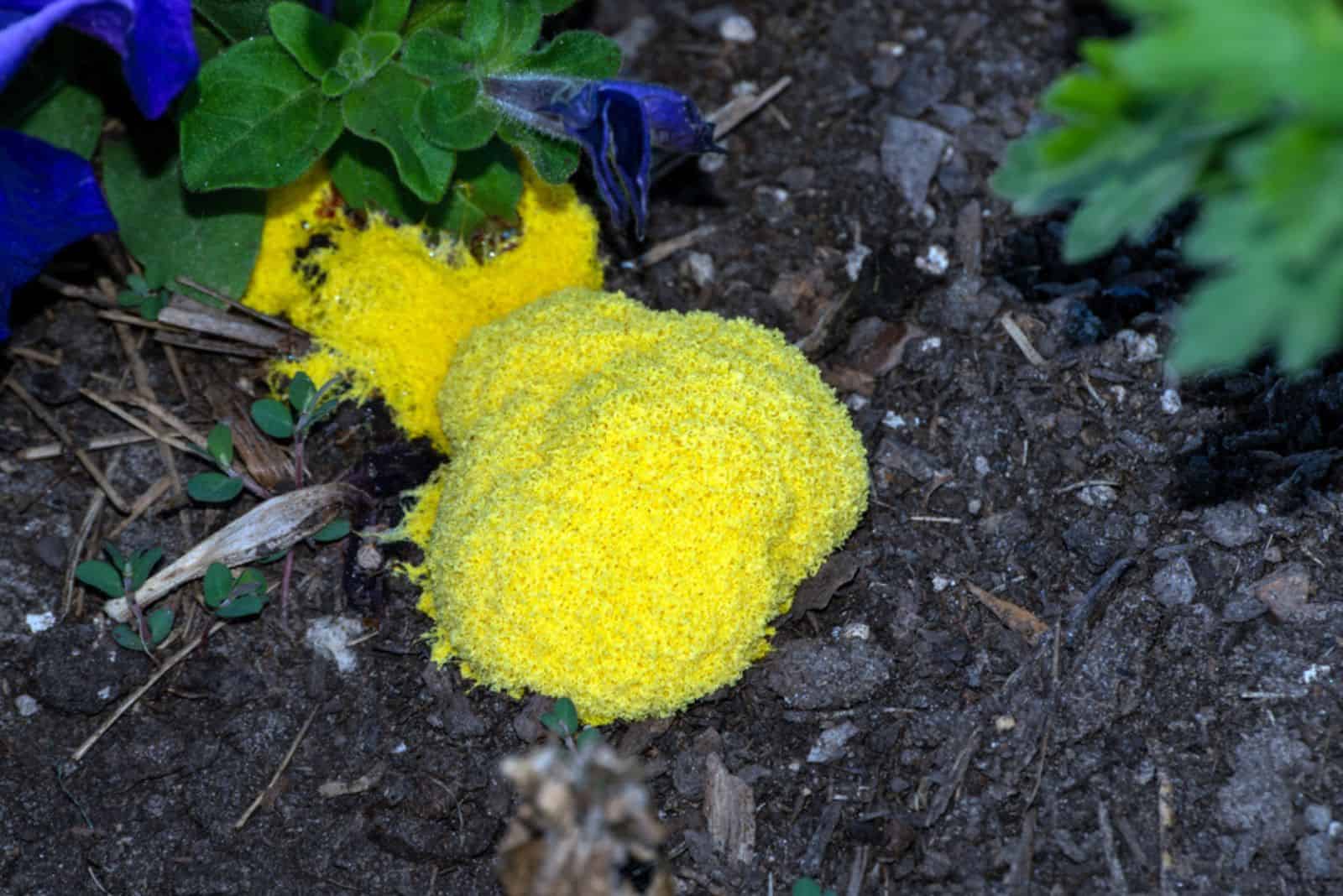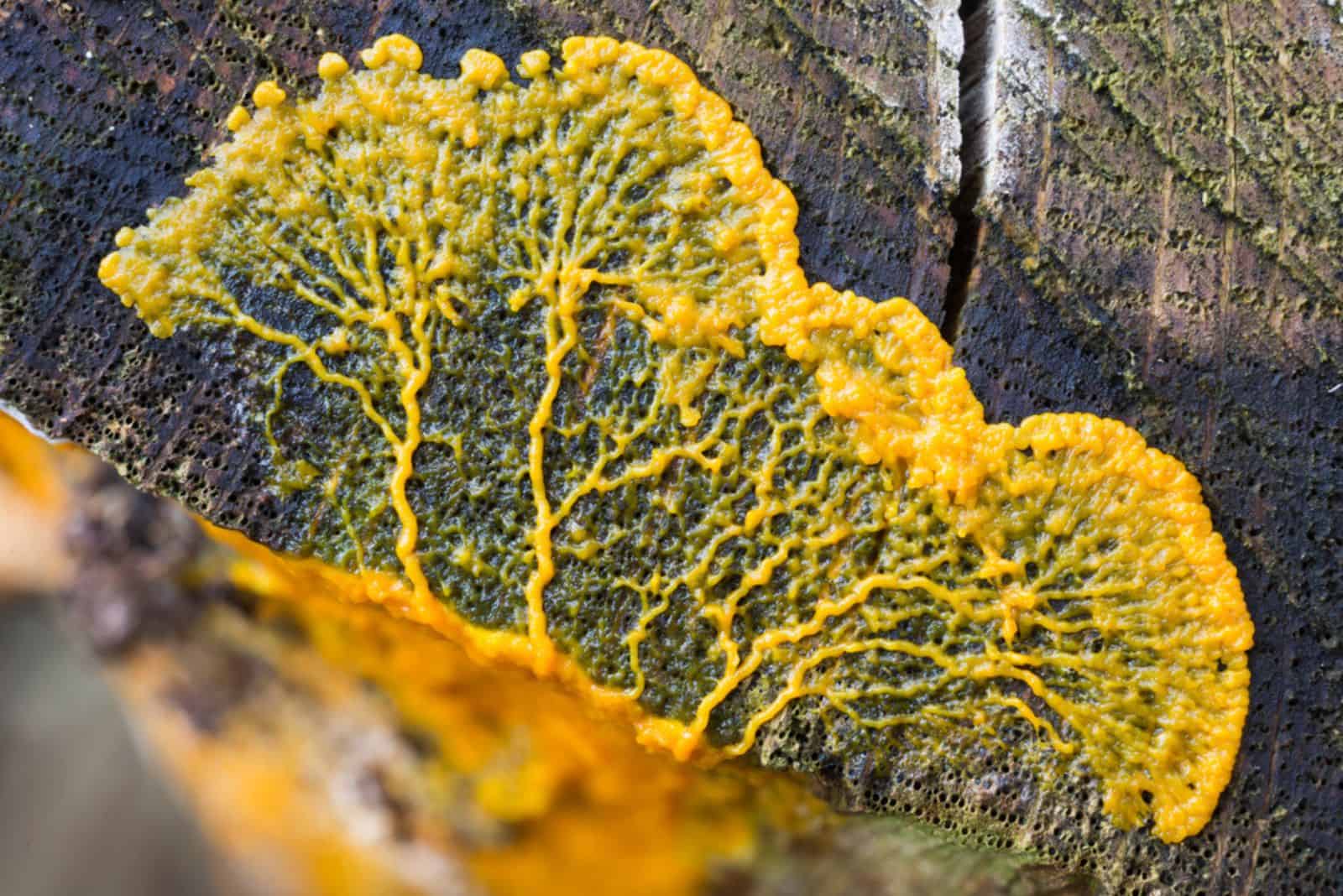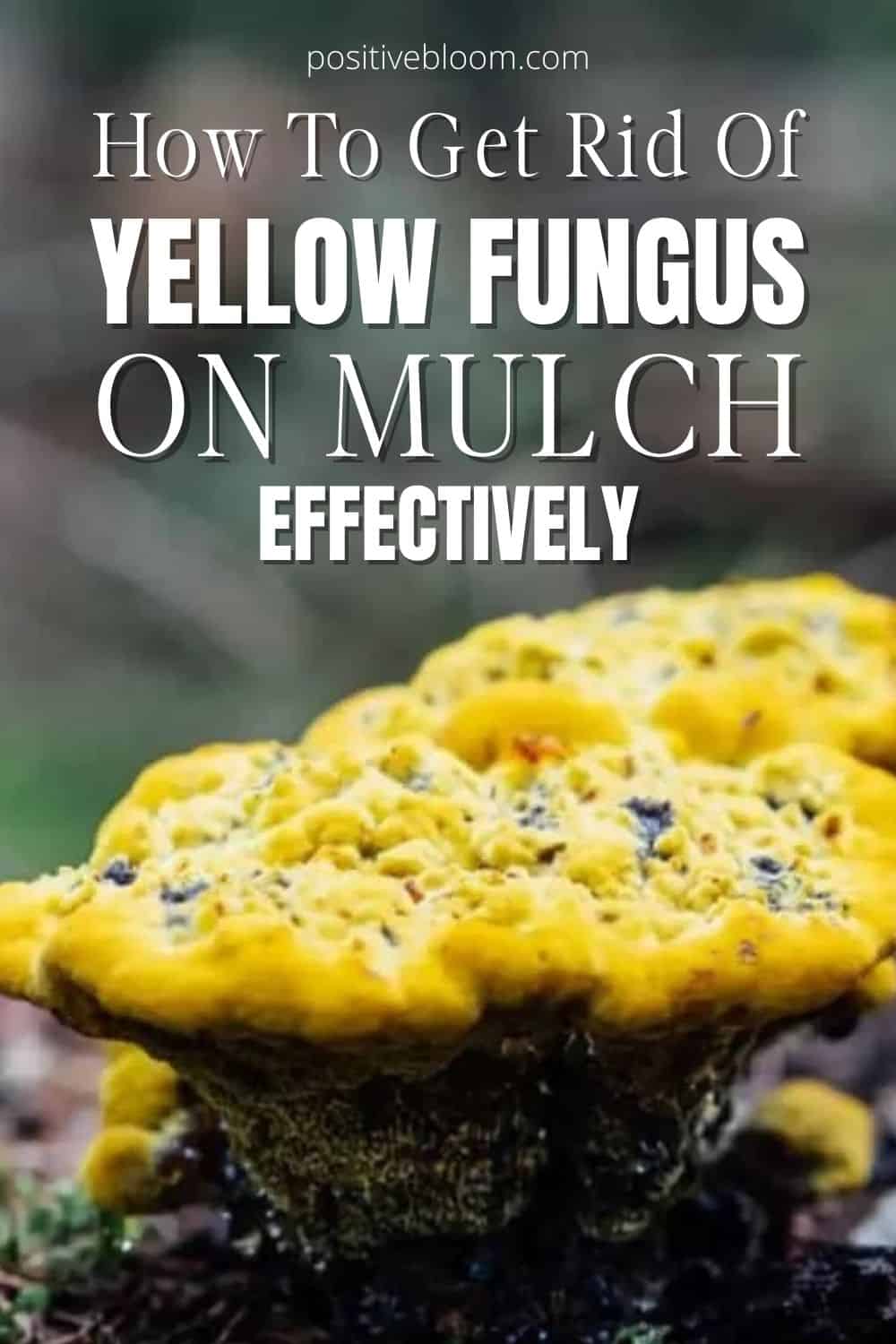Have you ever noticed a bright yellow fungus on mulch after rain? It’s not a pleasant sight to see.
This mulch fungus won’t hurt your plants or animals, but your garden is definitely better off without it tainting its looks.
To that end, we will discuss an effective way to remove this mold from your wood mulch in your outdoor or indoor garden in this article. Just be careful when getting rid of it because you don’t want to spread the slime mold spores all over your yard.
Knowing how to do it properly is very beneficial, but there are some other things you should know about this species, such as what it actually is, why it appears in your yard in the first place, and how to prevent it (which is much better than removing it).
So, let’s begin!
How To Eliminate Yellow Fungus On Mulch
Thankfully, slime mold isn’t that difficult to remove; all you need is a little bit of patience. Unfortunately, this thing can infect your entire outdoor garden, including flower beds and potted plants, and their removal differs slightly in those cases.
We’ll discuss the best at-home ways of getting rid of this yellow fungus from hardwood mulches so that you can enjoy your garden once again.
Removal Of Slime Mold From Garden Plants
The good news is that you don’t need chemicals to remove this yellow blob (known as plasmodium) from your outdoor garden. But you do need some patience!
When the slime mold first appears, it is still wet, slimy, and tricky to remove. Therefore, you should let it dry out as its removal will be much easier.
Once the yellow mold is ready to be removed, take a trowel or a handheld shovel and carefully place it in a plastic bag or a large bucket. You can later burn it or just throw it in the trash (if it’s in the bag, that is).
You can also remove some of the organic material that’s been in contact with the mold just to be on the safe side!
Here is a video that can help you remove it successfully:
Removal Of Slime Mold From Potted Plants
The removal process is slightly different when the yellow fungus on mulch is on potted plants. You still need to remove the blob manually, but the aftercare isn’t the same.
Remove The Yellow Fungus
Once the slime dries out, you should use a trowel to place it in a plastic bag or a large bucket. Be very careful not to damage it as that can release spores.
Then remove the organic matter, such as stems, leaves, twigs, etc., and the top of the infected substrate, as this usually removes all the spores.
Repot The Plant
You can also try repotting your plant, as that will definitely eliminate all the spores. However, clean the pot and all the decorative elements (stones, pebbles, marbles, shells, etc.) because they may contain spores.
It goes without saying that you should use fresh soil, not the one your plant was originally planted in.
Use Fungicide
Finally, if you think that some spores have gotten into the fresh soil or that removing the top quarter of an inch of the growing medium didn’t help, you can always use a fungicide. (This could happen if you accidentally damage the dry mold while removing it.)
You should learn the differences and similarities between copper fungicide and neem oil because both products can be used as a fungicide (although copper fungicide does act more quickly, it can contaminate the substrate after a while).
But if you’re not a fan of these products, you can always make a weak solution of vinegar and water and spray the mulch with it or sprinkle some cinnamon on top of it.
This is an excellent method for eliminating all fungus species in mulch.
Your home would be wrapped in that Christmasy and festive scent no one can resist!
What Is Dog Vomit Slime Mold?
This so-called fungus goes by a lot of names, such as slime mold, scrambled egg slime, dog vomit fungus, etc. But this is not a fungus!
Yes, it was once classified like that, but microbiologists and protozoologists now claim that it belongs to the kingdom Protista.
There are many different species of slime mold, but the one that appears in your garden most frequently is called Fuligo septica. Another common variety is Physarum polycephalum, which is similar to the Fuligo septica.
They belong to a category of plasmodial slime molds that consist of one large cell (just like amoeba) and feed on bacteria and fungi.
Another group of this yellow fungus is known as cellular slime mold, and the members of this group form a fruiting body of many cells that contains spores.
Why Is Yellow Fungus Growing On Top Of My Mulch?
Knowing why yellow fungus appears on your mulch in the first place is an excellent way to prevent it. The slime mold needs to have the right conditions for growth, which include wet soils and not enough sunlight.
There are other things that can cause the appearance of blobs around your plants, and we’ll cover the most common ones in the sections below.
Infected Soil
One of the things that frequently results in yellow mold appearing around your potted plants is when the substrate from the nursery arrives infected. You might have also damaged the dry slime mold and spread its spores around your garden.
Therefore, always repot your new plants and be very, very careful when removing the yellow fungus.
Excess Moisture
Dog vomit fungus thrives in wet conditions, so if you irrigate your plants every day or there’s been heavy rain, it’s highly likely that this mold will appear.
Furthermore, using a sprinkler irrigation system can also lead to the development of this fungus, as moisture doesn’t allow the mulch to dry.
Therefore, it is better to water your plants heavily once or twice a week (or more if required) and not lightly every day.
Light irrigation will keep the mulch moist at all times and won’t be helpful to your plants as the mulch would end up absorbing almost everything.
Lack Of Sunlight
If there’s not enough sunlight, mulch will have a hard time drying out, which creates a breeding ground for this mold.
The yellow fungus doesn’t require sunlight to grow, so it’ll thrive in low-light conditions.
But there is something good about this; if there’s not enough light, the slime won’t produce spores successfully, which can help keep it in control.
Contaminated Fertilizer
Finally, organic fertilizers and compost can be contaminated with slime mold spores, spreading this fungus all over your garden.
Therefore, you should pour boiling water over your compost before using it to destroy all the spores and harmful bacteria. When it comes to fertilizers, consider getting them from certified dealers.
How Do You Prevent Yellow Mold On Mulch?
You can avoid dealing with slime mold by following a few simple steps that hinder its growth.
You only need high-quality mulch, a rake, and the proper watering technique, and we’ll discuss all these things in the following paragraphs.
Select A Proper Mulch
There are different types of mulch for potted plants and garden beds you can use, but the important thing is that it’s high-quality. Hardwood mulch, such as cedar mulch, is one of the best choices as it isn’t prone to fungal infections.
You can also use pine bark, but it is less durable than cedar and can slightly acidify the soil.
Rake The Mulch
The next thing you need to do, regardless of the mulch you’re using, is rake it. You should turn the mulch once a month or every other month to expose the bottommost parts to sunlight. That way, your mulch will be consistently exposed to light and dry out properly.
This method will introduce fresh air to the lowest parts and lower the risk of mold growth.
Adjust Watering
Finally, irrigating your plants every day or using sprinklers can increase the risk of slime mold growth, which is why you should adjust your watering method.
Constantly moist mulch will definitely develop this fungus because it thrives in damp and dark places.
But if you only water your plants a couple of times a week when the topsoil really dries out (or the instructions say otherwise), mulch will have the time to dry out.
Avoid using sprinklers as they constantly wet the soil, which isn’t beneficial at all if you have mulched the garden bed. Mulch will quickly absorb that small amount of water without letting anything get to the plant’s roots.
You’ll end up having to deal with thirsty plants on top of slime mold on your mulch!
Is Yellow Slime Mold Harmful?
According to extension plant pathologist Ann Hazelrigg, slime molds are not poisonous to humans or animals. They don’t have appealing looks, but that’s about it!
However, dog vomit mold can cause an allergic reaction in individuals with a mold allergy. The response is caused by inhaling slime mold spores, which is all the more reason to remove them from your garden with care.
Final Thoughts
We discussed all the essential things you need to know about yellow fungus on mulch, and the most important thing is how to safely remove it.
The good news is that you don’t need any chemicals, and you can do it with a single trowel and a lot of patience and care.
The only thing you need to be careful about is damaging it, as that can spread its spores all over your garden.
We also mentioned some other things about this mold, such as what it is, why it appears in your yard, and how to prevent it.
Finally, it’s good to know that yellow fungus isn’t toxic, so you don’t have to be afraid for your children and pets.
Until next time!
Like this post? Share or pin it for later!

